- Home
- Peter Tremayne
Shroud for the Archbishop
Shroud for the Archbishop Read online
For Peter Haining; who advised at the christening, also for Mike Ashley; the first ‘converts’ of Sister Fidelma.
Table of Contents
Title Page
Chapter One
Chapter Two
Chapter Three
Chapter Four
Chapter Five
Chapter Six
Chapter Seven
Chapter Eight
Chapter Nine
Chapter Ten
Chapter Eleven
Chapter Twelve
Chapter Thirteen
Chapter Fourteen
Chapter Fifteen
Chapter Sixteen
Chapter Seventeen
Chapter Eighteen
Sister Fidelma’s World
The ‘Sister Fidelma’ mysteries by Peter Tremayne
Copyright Page
Everywhere there is one principle of justice, that is the interest of the stronger.
The Republic
Plato (427 – 347 BC)
Sister Fidelma’s World
The Sister Fidelma mysteries are set during the mid-seventh century A.D.
Sister Fidelma is not simply a religieuse, a member of the community of St. Brigid of Kildare. She is also a qualified dálaigh, or advocate of the ancient law courts of Ireland. As this background will not be familiar to many readers, this foreword provides a few essential points of reference designed to make the stories more readily appreciated.
Ireland, in the seventh century A.D., consisted of five main provincial kingdoms: Indeed, the modern Irish word for a province is still cúige, literally ‘a fifth’. Four provincial kings—of Ulaidh (Ulster), of Connacht, of Muman (Munster), and of Laigin (Leinster) —gave their allegiance to the Ard Rí or High King, who ruled from Tara, in the ‘royal’ fifth province of Midhe (Meath), which means the ‘middle province’. Even among these provincial kingdoms, there was a decentralisation of power to petty kingdoms and clan territories.
The law of primogeniture, the inheritance by the eldest son or daughter, was an alien concept in Ireland. Kingship, from the lowliest clan chieftain to the High King, was only partially hereditary and mainly electoral. Each ruler had to prove himself worthy of office and be elected by the derbfhine of his family—three generations gathered in conclave. If a ruler did not pursue the commonwealth of the people, he could be impeached and removed from office. Therefore, the monarchial system of ancient Ireland had more in common with a modern-day republic than with the feudal monarchies of medieval Europe.
Ireland, in the seventh century A.D. was governed by a system of sophisticated laws called the Laws of the Fénechas, or land-tillers, which became more popularly known as the Brehon Laws, deriving from the word breitheamh—a judge. Tradition has it that these laws were first gathered in 714 B.C. by the order of the High King, Ollamh Fódhla. But it was in A.D. 438 that the High King, Laoghaire, appointed a commission of nine learned people to study, revise and commit the laws to the new writing in Latin characters. One of those serving on the commission was Patrick, eventually to become patron saint of Ireland. After three years, the commission produced a written text of the laws, the first known codification.
The first complete surviving texts of the ancient laws of Ireland are preserved in an eleventh-century manuscript book. It was not until the seventeenth century that the English colonial administration in Ireland finally suppressed the use of the Brehon Law system. To even possess a copy of the law books was punishable, often by death or deportation.
The law system was not static and every three years at the Féis Temhrach (Festival of Tara) the lawyers and administrators gathered to consider and revise the laws in the light of changing society and its needs.
Under these laws, women occupied a unique place. The Irish laws gave more rights and protection to women than any other western law code at that time or since. Women could, and did, aspire to all offices and professions as the equals of men. They could be political leaders, command their people in battle as warriors, be physicians, local magistrates, poets, artisans, lawyers and judges. We know the name of many female judges of Fidelma’s period—Bríg Briugaid, Áine Ingine Iugaire and Darí among many others. Darí, for example, was not only a judge but the author of a noted law text written in the sixth century A.D. Women were protected by the laws against sexual harassment; against discrimination; from rape; they had the right of divorce on equal terms from their husbands with equitable separation laws, and could demand part of their husband’s property as a divorce settlement; they had the right of inheritance of personal property and the right of sickness benefits. Seen from today’s perspective, the Brehon Laws provided for an almost feminist paradise.
This background, and its strong contrast with Ireland’s neighbours, should be understood to appreciate Fidelma’s role in these stories.
Fidelma was born at Cashel, capital of the kingdom of Muman (Munster) in south-west Ireland, in A.D. 636. She was the youngest daughter of Failbe Fland, the king, who died the year after her birth and was raised under the guidance of a distant cousin, Abbot Laisran of Durrow. When she reached the ‘Age of Choice’ (fourteen years), she went to study at the bardic school of the Brehon Morann of Tara, as many other young Irish girls did. Eight years of study resulted in Fidelma obtaining the degree of Anruth, only one degree below the highest offered at either bardic or ecclesiastical universities in ancient Ireland. The highest degree was ollamh, still the modern Irish word for a professor. Fidelma’s studies were in law, both in the criminal code of the Senchus Mór and the civil code of the Leabhar Acaill. She therefore became a dálaigh or advocate of the courts.
Her role could be likened to a modern Scottish sheriff-substitute, whose job is to gather and assess the evidence, independent of the police, to see if there is a case to be answered. The modern French juge d’instruction holds a similar role.
In those days, most of the professional or intellectual classes were members of the new Christian religious houses, just as, in previous centuries, all intellectuals and members of professions were Druids. Fidelma became a member of the religious community of Kildare founded in the late fifth century A.D. by St. Brigid.
While the seventh century A.D. was considered part of the European ‘Dark Ages’, for Ireland it was a period of ‘Golden Enlightenment’. Students from every corner of Europe flocked to Irish universities to receive their education, including the sons of the Anglo-Saxon kings. For example, Aldfrith, who became king of Northumbria from A.D. 685 – 705, was educated at Bangor and achieved a reputation in Ireland as a poet in the Irish language. Three of his poems still survive in ancient texts. At the great ecclesiastical university of Durrow, at this time, it is recorded that no less than eighteen different nations were represented among the students. At the same time, Irish male and female missionaries were setting out to reconvert a pagan European to Christianity, establishing churches, monasteries and centres of learning throughout Europe as far east as Kiev, in the Ukraine; as far north as the Faroes; and as far south as Taranto in southern Italy. Ireland was a by-word for literacy and learning.
However, the Celtic Church of Ireland was in constant dispute with Rome on matters of liturgy and ritual. Rome had began to reform itself in the fourth century, changing its dating of Easter and aspects of its liturgy. The Celtic Church and the Eastern Orthodox Church refused to follow Rome, but the Celtic Church was gradually absorbed by Rome between the ninth and eleventh centuries while the Eastern Orthodox churches have continued to remain independent of Rome. The Celtic Church of Ireland, during Fidelma’s time, was much concerned with this conflict.
One thing that marked both the Celtic Church and Rome in the seventh century was that the concept of celib
acy was not universal. While there were always ascetics in both churches who sublimated physical love in a dedication to the deity, it was not until the Council of Nicea in A.D. 325, that clerical marriages were condemned but not banned. The concept of celibacy in the Roman Church arose from the customs practised by the pagan priestesses of Vesta and the priests of Diana. By the fifth century Rome had forbidden clerics from the rank of abbot and bishop to sleep with their wives and, shortly after, even to marry at all. The general clergy were discouraged from marrying by Rome but not forbidden to do so. Indeed, it was not until the reforming papacy of Leo IX (A.D. 1049 – 1054) that a serious attempt was made to force the western clergy to accept universal celibacy. In the Eastern Orthodox Church, priests below the rank of abbot and bishop have retained their right to marry until this day.
The condemnation of the ‘sin of the flesh’ remained alien to the Celtic Church for a long time after Rome’s attitude became a dogma. In Fidelma’s world, both sexes inhabited abbeys and monastic foundations which were known as conhospitae, or double houses, where men and women lived raising their children in Christ’s service.
Fidelma’s own house of St. Brigid of Kildare was one such community of both sexes in Fidelma’s time. When Brigid established her community at Kildare (Cill-Dara = the church of oaks), she invited a bishop named Conlaed to join her. Her first biography, written in A.D. 650, in Fidelma’s time, was written by a monk of Kildare named Cogitosus, who makes it clear that it was a mixed community.
It should also be pointed out that, showing women’s coequal role with men, women were priests of the Celtic Church at this time. Brigid herself was ordained a bishop by Patrick’s nephew, Mel and her case was not unique. Rome actually wrote a protest in the sixth century at the Celtic practise of allowing women to celebrate the divine sacrifice of Mass.
Armed with this background knowledge we may now enter Fidelma’s world. This story is placed in the year A.D. 664.
Chapter One
The night was warm and fragrant; but as oppressively scented as only a Roman summer’s night can frequently be. The gloom-shrouded courtyard of the Lateran Palace was filled with the bitter-sweet scents of the herbs that grew in the well-tended beds around its borders; the muskiness of basil and the pungent smell of rosemary ascended, almost overpoweringly, in the stifling air. The young officer-of-the-watch of the palace custodes raised his hand to wipe the perspiration from his brow where it gathered in droplets on his forehead beneath the bronze visor of his helmet. Although the atmosphere was sultry now, he reflected that in a few hours he would be glad of the warmth of the tough woollen sagus, hanging loosely from his shoulders, for the temperature would sink into a sudden pre-dawn chill.
The single bell from the nearby basilica of St John chimed the midnight hour, the hour of the Angelus. As the bell chimed, the young officer dutifully mumbled the ritual prayer: ‘Angelus Domini nuntiavit Mariae … The angels of the Lord announced unto Mary …’ He muttered the prayer automatically, with neither feeling for the words nor the meaning of the sentences. Perhaps it was because his mind was not concentrating on the formula that he heard the noise.
Above the tenor chiming of the single bell and the gushing of the small fountain in the centre of the courtyard, there came another sound to the young man’s ears. The sound of leather scraping on paving stone. The youthful custos frowned, holding his head to one side to identify the direction of the noise.
He was sure that he had heard a heavy footfall in the dark shadows of the far side of the courtyard.
‘Who’s there?’ he demanded.
No answer came back.
The officer-of-the-watch eased his short sword from its leather sheath, the broad-bladed gladius with which the famed legions of Rome had once imposed their imperial will on the peoples of the world. He frowned at his inconsequential thought. Now this same short sword defended the safety of the palace of the Bishop of Rome, the Holy Father of the Universal Church of Christ – Sacroscancta Laternensis ecclesia, omnium urbis et orbis ecclesiarum mater et caput.
‘Who is there? Show yourself’ he called again, his voice raising harshly with the command.
No answer again but … yes; the officer heard a shuffling, hurried step now. Someone was moving away from the shrouded courtyard and down one of the darkened alleyways. The custos silently cursed the darkness of the courtyard but, with swift strides, he moved over its paved stones and reached the entrance to the alley. In the gloom he could see a figure, with hunched shoulders, moving rapidly along it.
‘Halt!’
The young officer summoned as much force as he could into his voice.
The figure broke into a run, the leather of its flat-soled sandals slapping noisily on the stone.
Letting dignity go to the wind, the custos began to run down the alley. While he was young and agile, his quarry seemed more nimble for when the officer reached the end of the alley there was no sign of the object of his pursuit. The alley opened out into a larger courtyard. This courtyard, unlike the smaller courtyard from where he had come, was well lit with several blazing torches. The reason for this was simple; this courtyard was surrounded by the chambers of the administrators of the papal palace while the smaller courtyard gave entrance only to the guests’ sleeping quarters.
The young officer halted, eyes narrowed, and stared around the large rectangle. On the far side, against the entrance to one of the main buildings he could see two of his fellow custodes standing guard. If he called to them for assistance, he might warn his quarry. He compressed his lips and continued his narrow-eyed examination. But he could see no one else. He began to walk across the courtyard with the purpose of asking the other custodes if they had seen anyone exit from the alleyway when he was halted by a slight noise behind him to his left.
He swung round peering into the gloom.
A dark figure stood before one of the doors facing onto the courtyard.
‘Identify yourself’ he commanded harshly.
The figure stiffened and then took a few paces forward but made no reply.
‘Come forward and be identified!’ snapped the officer, sword held ready across his breastplate.
‘In the name of God,’ wheezed a voice unctuously, ‘you identify yourself first!’
Surprised by the answer, the young man replied:
‘I am the tesserarius Licinius of the custodes. Now identify yourself!’ Licinius could not help a sense of pride in his rank for he had been newly promoted. In the ancient imperial army the rank signified the officer who received from his general the ticket, or tessera, on which the password of the day was written. For the custodes of the Lateran Palace, it was the rank of the officer-of-the-watch.
‘I am Brother Aon Duine,’ came the reply in the lisping accent of a foreigner. The man made a further step forward so that the flickering light of a nearby torch fell on his features. Licinius observed that the man was slightly rotund and spoke with the wheeze of someone with respiratory problems, or someone who might have been running shortly before.
Licinius examined the man suspiciously and motioned him forward another pace so that the light might fully illuminate him. The brother had a full, moon face and wore the outlandish tonsure of an Irish monk whereby the front of the head was shaved from a line from ear to ear with the hair worn long behind.
‘Brother “Ayn-dina”?’ He tried to repeat the name given to him by the monk.
The man smiled a pleasant affirmation of the name.
‘What are you doing here at this hour?’ the young officer demanded.
The rotund, middle-aged monk spread his hands.
‘That is my office, tesserarius,’ he said in explanation, motioning to the building behind him.
‘Have you been in the small courtyard yonder?’ Licinius asked, pointing with his short sword up the dark alleyway.
The moon-faced monk blinked and looked surprised.
‘Why should I have been there?’
Licinius sighed in exas
peration.
‘I chased someone down that alley but a moment ago. Do you say that it was not you?’
The monk shook his head vigorously.
‘I have been at my desk until I left my office just now. I came into the courtyard and was accosted by you as I stepped beyond the door.’
Licinius sheathed his sword and passed a hand across his forehead in perplexity.
‘And you saw no one else, someone who had been running?’
Again the monk shook his head emphatically.
‘None before you called on me to identify myself.’
‘Then forgive me, brother, and be about your business.’
The rotund monk paused only a moment to bow his head in gratitude before scurrying away across the courtyard, the leather of his sandals slapping as he made his way through the arched entrance to the streets of the city beyond.
One of the guards from the main gate, a decurion, had crossed the courtyard to see what the disturbance was about.
‘Ah, Licinius! It’s you. What is happening?’
The tesserarius grimaced in his annoyance.
‘Someone was skulking up in the small courtyard yonder, Marcus. I challenged him and chased him down here. Now he seems to have eluded me.’
The decurion named Marcus chuckled softly.
‘Why should you be pursuing anyone, Licinius? What’s so improper about anyone being in the small courtyard at this hour or any hour?’
Licinius looked sourly at his colleague, feeling bitter at the world and, in particular, the guard duty he had landed that night.
‘Don’t you know? The domus hospitale, the guest chambers, are situated there. And His Holiness has special guests; bishops and abbots from the outlandish Saxon kingdoms. I was told to mount a special guard on them, for the Saxons are said to have enemies in Rome. I have been told to question anyone behaving suspiciously in the vicinity of the guest chambers.’
The other custos gave a dismissive sniff.
‘I thought the Saxons were still pagans?’ He paused and then nodded in the direction in which the monk had vanished. ‘Who were you questioning just now if that was not your suspicious character?’

 The Shapeshifter's Lair
The Shapeshifter's Lair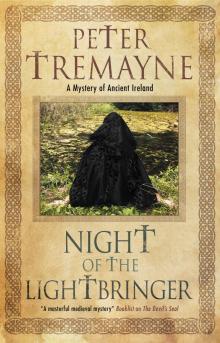 Night of the Lightbringer
Night of the Lightbringer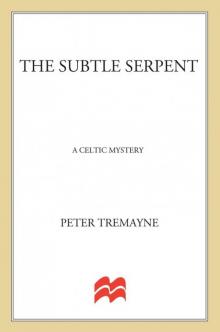 The Subtle Serpent
The Subtle Serpent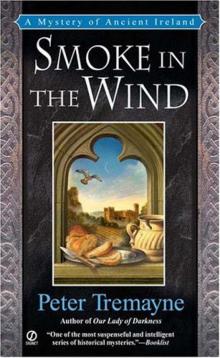 Smoke in the Wind
Smoke in the Wind Island of Shadows
Island of Shadows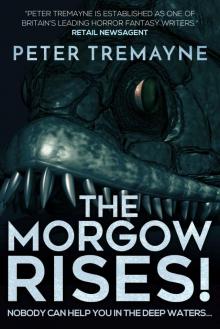 The Morgow Rises!
The Morgow Rises!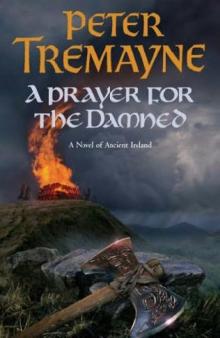 A Prayer for the Damned sf-17
A Prayer for the Damned sf-17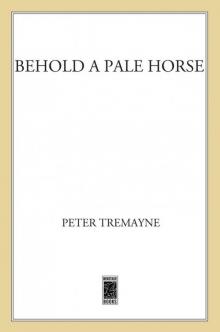 Behold a Pale Horse
Behold a Pale Horse Shroud for the Archbishop
Shroud for the Archbishop The Banshee (sister fidelma)
The Banshee (sister fidelma)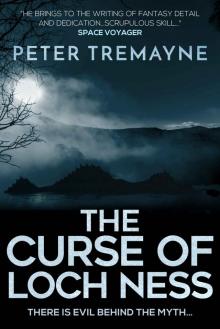 The Curse of Loch Ness
The Curse of Loch Ness Whispers of the Dead
Whispers of the Dead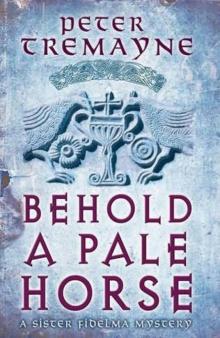 Behold a Pale Horse sf-22
Behold a Pale Horse sf-22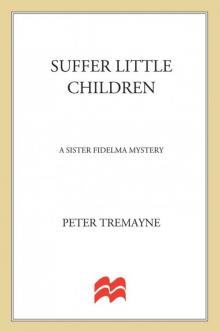 Suffer Little Children
Suffer Little Children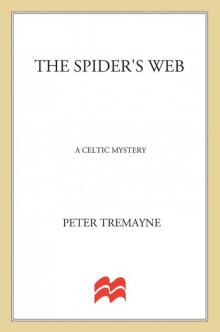 The Spider's Web
The Spider's Web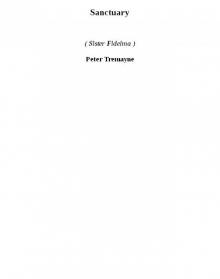 Sanctuary (sister fidelma)
Sanctuary (sister fidelma) Penance of the Damned (Sister Fidelma)
Penance of the Damned (Sister Fidelma)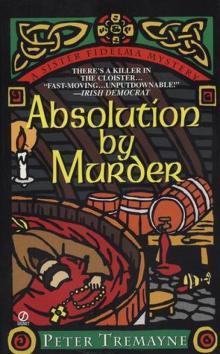 Absolution by Murder
Absolution by Murder A Scream From The Sepulchre
A Scream From The Sepulchre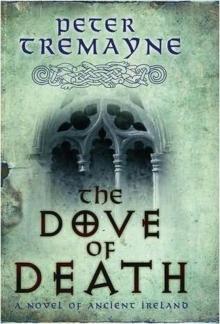 The Dove of Death sf-20
The Dove of Death sf-20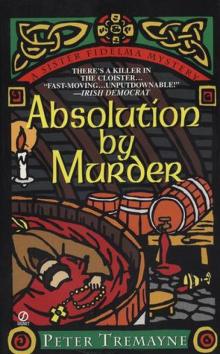 Absolution by Murder sf-1
Absolution by Murder sf-1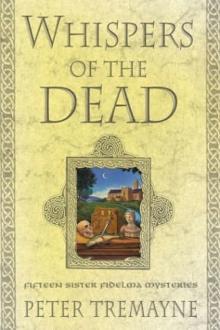 Whispers of the Dead sf-15
Whispers of the Dead sf-15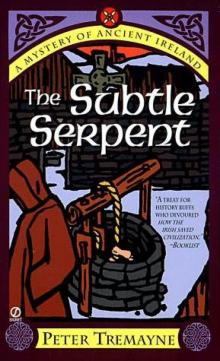 The Subtle Serpent sf-4
The Subtle Serpent sf-4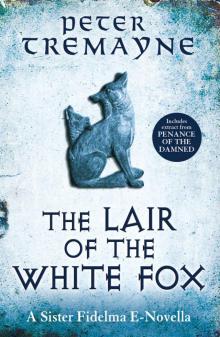 The Lair of the White Fox (e-novella) (Kindle Single)
The Lair of the White Fox (e-novella) (Kindle Single) Badger's Moon sf-13
Badger's Moon sf-13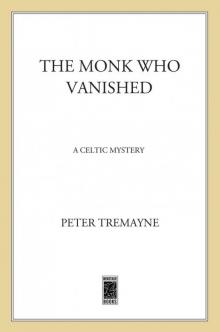 The Monk Who Vanished
The Monk Who Vanished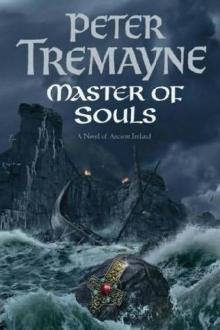 Master of Souls sf-16
Master of Souls sf-16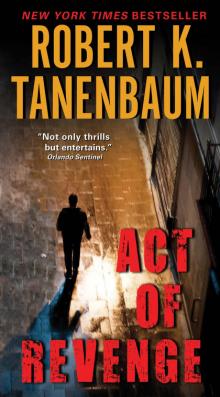 Act of Mercy sf-8
Act of Mercy sf-8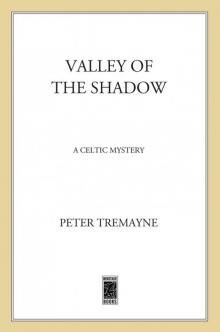 Valley of the Shadow
Valley of the Shadow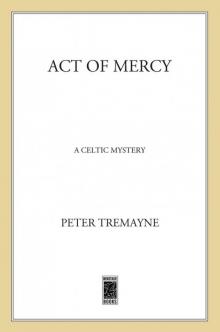 Act of Mercy
Act of Mercy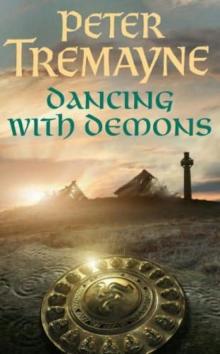 Dancing With Demons sf-18
Dancing With Demons sf-18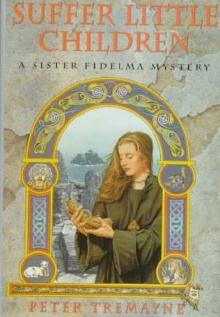 Suffer Little Children sf-3
Suffer Little Children sf-3 The Leper's Bell
The Leper's Bell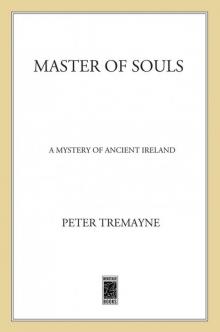 Master of Souls
Master of Souls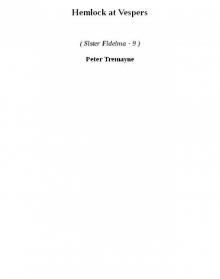 Hemlock at Vespers sf-9
Hemlock at Vespers sf-9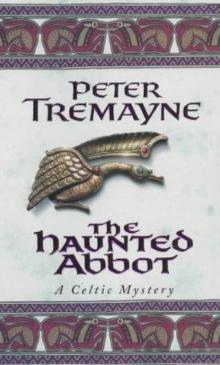 The Haunted Abbot sf-12
The Haunted Abbot sf-12 23- The Seventh Trumpet
23- The Seventh Trumpet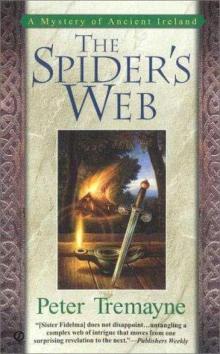 The Spider's Web sf-5
The Spider's Web sf-5 Valley of the Shadow sf-6
Valley of the Shadow sf-6 Bloodmoon
Bloodmoon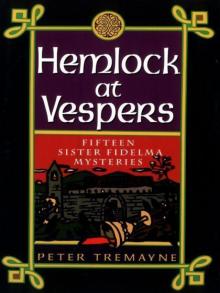 Hemlock at Vespers: Fifteen Sister Fidelma Mysteries
Hemlock at Vespers: Fifteen Sister Fidelma Mysteries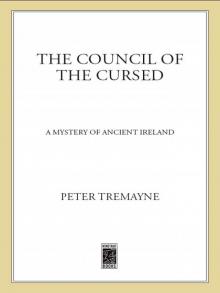 The Council of the Cursed
The Council of the Cursed The Dove of Death
The Dove of Death The Leper's bell sf-14
The Leper's bell sf-14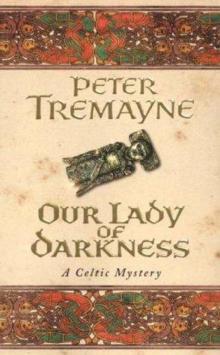 Our Lady of Darkness sf-10
Our Lady of Darkness sf-10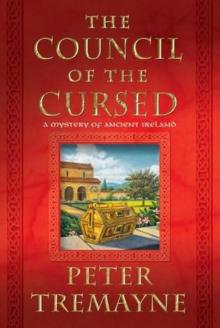 The Council of the Cursed sf-19
The Council of the Cursed sf-19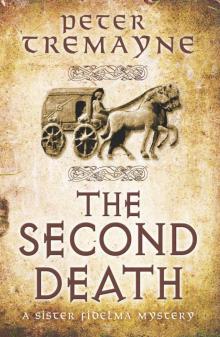 The Second Death (Sister Fidelma Mysteries)
The Second Death (Sister Fidelma Mysteries) The Fiery Devil
The Fiery Devil Dancing With Demons
Dancing With Demons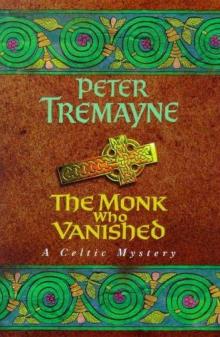 The Monk Who Vanished sf-7
The Monk Who Vanished sf-7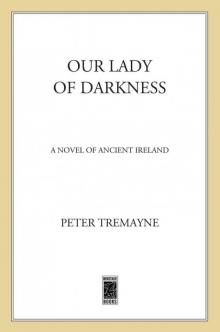 Our Lady of Darkness
Our Lady of Darkness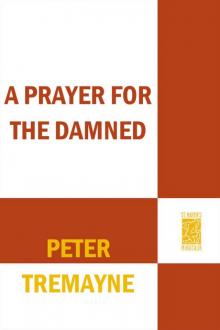 A Prayer for the Damned
A Prayer for the Damned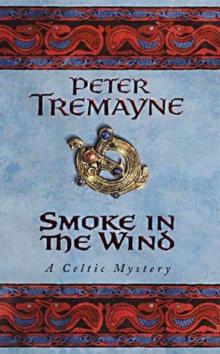 Smoke in the Wind sf-11
Smoke in the Wind sf-11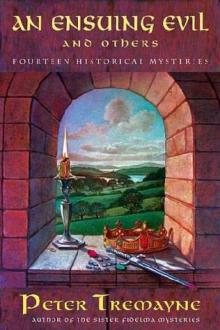 An Ensuing Evil and Others
An Ensuing Evil and Others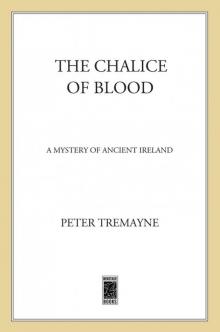 Chalice of Blood
Chalice of Blood